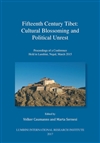CIA Paramilitary Operations in Tibet is the story of how the US government -- primarily through the CIA and often in cooperation with India -- came to harness, nurture, and encourage Tibetan defiance in one of the most extreme covert campaigns of the Cold War. In particular, it details an important chapter in the CIA's paramilitary history. In Tibet, new kinds of equipment -- aircraft and parachutes, for example -- were combat-tested under the most extreme conditions imaginable. New communications techniques were tried and perfected. In many cases, these lessons learned would be applied to other Cold War battlefields like Vietnam, Laos, and elsewhere. Tibet, therefore, became a vital proving ground for CIA case officers and their spycraft.
CIA Paramilitary Operations in Tibet includes over 60 color and black and white photographs of the participants in the campaign and the insignia of the organizations involved, along with specially commissioned color artworks illustrating the aircraft employed in the skies above Tibet.
CIA Paramilitary Operations in Tibet: 1957-1975, Ken Conboy, Helion and Company, Paperback (8.25" x 11.5"), 82 pages, $29.95
Kenneth Conboy was South East Asian policy analyst and deputy director of the Asian Studies Centre in Washington D.C., 1986-1992. Since then he has held roles in risk management companies in Indonesia, and he currently serves as Risk Management Advisory Country Manager in Indonesia. He has written a number of books about war in Asia, as well as several articles.
|
CONTENTS: CIA Paramilitary Operations in Tibet
|
| Abbreviations |
2
|
|
|
| 1 |
First Contact |
2
|
| 2
|
Tightrope |
4
|
| 3
|
Brothers Divine |
7
|
| 4
|
Saipan |
11 |
| 5
|
Growing Pains |
16 |
| 6
|
The Farm |
21 |
| 7
|
Whale |
26 |
| 8
|
Camp Hale |
28 |
| 9
|
Hitting their Stride |
31 |
| 10 |
Markham |
34 |
| 11 |
Mustang |
38 |
| 12 |
Favoured Son |
41 |
| 13 |
Chakrata |
44 |
| 14 |
Oak Tree |
46 |
| 15 |
The Joelikote Boys |
48 |
| 16 |
Borrowed Time |
50 |
| 17 |
Revolution |
54 |
| 18 |
Civil War |
58 |
| 19 |
A Pass Too Far |
64 |
| 20 |
Second Wind |
66 |
|
|
| Sources and Bibliography |
71 |
| About the Author |
72 |
|



